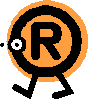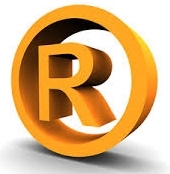
by Kathleen Lynch | Nov 13, 2014 | Copyright, Intellectual Property
This is one in a series of posts covering some basic aspects of intellectual property law. Previous posts touch on patents (parts 1 and 2) and trademarks (parts 3 and 4). This post will cover the general elements of copyright law.
Copyright law protects the expression of an idea fixed in a tangible medium. Thus, the protection is more limited than other aspects of intellectual property law. However, if copyright infringement is found, relief to the copyright owner can include an order against further infringement as well as money damages which can range from between $200 and $300,000 per act of infringement. Damages may also include attorneys’ fees and costs. Infringers may also be subject to criminal prosecution and may be imprisoned if found guilty.
Types of works covered by copyright law include:
- literary;
- musical;
- dramatic;
- pantomimes and choreographic works;
- pictorial, graphic, and sculptural works;
- audiovisual works;
- sound recordings;
- derivative works;
- compilations; and
- architectural works.
In order to proceed with a copyright infringement action, you must register your work with the United States Copyright Office. This can be done online on their website.
Copyright notice is given by using “©” followed by the year or years in which the work was published and the owner. In addition, a statement such as “all rights reserved” or “no unauthorized use permitted” may follow the notice. This puts the public on notice of your intent to enforce your rights via copyright law.
Protecting your innovative developments is critical to any organization. Having the right person to help you make that decision is important. The Law Office of Kathleen Lynch PLLC is designed to help businesses such as yours keep ahead of the game. The first telephone consultation is free. Email us at [email protected].

by Kathleen Lynch | Nov 4, 2014 | Trademarks
This is the second in a series or posts on the basics of trademark law. The first one focused on the selection of a mark for use in connection with goods or services. Here I focus on the federal trademark registration process.
Once you’ve selected your mark for use in connection with your product or service, you should conduct a search to determine whether your mark is available for use and registration. This involves reviewing a number of different databases including the federal and state trademark databases, as well as a number of different directories for use of your mark and similar marks in connection with similar goods or services. A trademark attorney can assist you with this process.
If the mark is available for use, determine whether or not you need to register your mark with the United States Patent and Trademark Office. Federal trademark registration requires a showing that you have sold your goods or services using your mark across state lines. If your business plan does not anticipate crossing state lines, then you should seek state trademark protection. However, if you anticipate that your business will be conducted across state lines, you should seek federal trademark protection.
Filing for federal trademark protection can be done prior to an actual sale of your goods or services with your mark across state lines. Alternatively, if you have already begun using your mark with your goods or services across state lines, you can file your application along with proof of use of the mark.
After your mark is filed, it will be reviewed substantively by an examining attorney. If your mark is allowed, it will be published for opposition. This allows anyone who believes they may be harmed by your registration to file an opposition. An opposition proceeding is a quasi-judicial proceeding the takes place in the US Patent and Trademark Office. It is similar to litigation in that there are documents exchanged and depositions may be taken. During an opposition proceeding, the opposing party must show how they will be harmed by registration of your mark.
The determining factor in an opposition is essentially whether a potential consumer would likely be confused as to the source of opposer’s goods or services and yours. Several factors go into the determination. These include:
- how similar are the marks in their appearance and impression;
- how similar are the goods and/or services;
- do the goods or services travel in the same or related channels of trade;
- how sophisticated are the buyers of these goods or services, in other words do they purchase on impulse or would they be relatively careful or thoughtful in their purchase; and
- how many other marks are in use with similar goods or services.
Your ability to prevail on these factors will likely result in registration of your mark.
One final note about trademarks is that they need to be used. After your mark has been registered, you will still need to show to the U.S. Patent and Trademark Office proof of use of your mark in connection with the goods or services listed on the registration. Failure to do so may result in a lapse of your registration.

by Kathleen Lynch | Oct 28, 2014 | Patent, US Patent Office
Last week I was vindicated to some extent by Good Morning America. Lori Greiner from the show “Shark Tank” provided some advice to the morning’s “tank” contestants. First thing she said was: “get a good IP attorney.” At the risk of sounding self-promotional, this is so important. I’ve posted before on how to select a good IP attorney. The things I think are most important are experience, expertise and relationship.
Here are a few questions to ask a potential IP attorney:
Does s/he practice patent law?
If you are interested in protecting an article or method of manufacture, you should seek out the advice of a patent attorney. Only patent attorneys and patent agents practice before the US Patent Office. In order to practice before the US Patent and Trademark Office, an attorney or agent must pass the US Patent Bar. This requires the person to have a bachelor’s degree in a technical field such as science or engineering and pass the US Patent Bar examination. Those tasked with preparing and filing a patent application and communicating with the US Patent Office with regard to patents and patent applications, must take and pass the US Patent Bar.
How long has s/he been practicing patent law?
Like any profession, patent law requires a certain level of skill and expertise which comes from experience and work. Someone who has filed many patent applications and has helped to move numerous applications through to issued patents will have a greater level of experience than someone with few or no dealings with the Patent Office.
What is his/her area of expertise?
This is a critical area. You need to ask what is the patent attorney’s area of expertise. What did the attorney study in college and in what area of technology do they focus their patent practice? In the same way you wouldn’t want a dermatologist to conduct heart by-pass surgery on you or a loved one, you should not select an attorney with a biochemistry degree to file your patent application directed to electronics.
Finally, there is the relationship aspect of any interaction between attorney and client. Do you have confidence in this person? Do you trust this person to act in your best interest?
As Lori Greiner confirmed, selecting the right IP attorney is critical. The Law Office of Kathleen Lynch PLLC is designed to help businesses such as yours keep ahead of the game. The first telephone consultation is free. Email us at [email protected].

by Kathleen Lynch | Oct 21, 2014 | Trademarks
This is the third in a series of posts focused on some of the basic tenets of intellectual property law. Articles one and two focused on some fundamental principles of patent law.
A trademark is a source indicator of goods or services. As such, you want your mark to stand out and be remembered. There are types or categories of marks that provide a greater level of protection than others. The types in order of strength (most to least) are: arbitrary, fanciful, suggestive, descriptive and generic.
Marks with the greatest scope of protection are arbitrary ones. These are marks that consist of made-up words created specifically for use as a trademark. These include Kodak and Exxon. These marks have wide protection because all association with the mark is in connection with the owner’s product and/or service. Fanciful marks are actual words that are used in connection with a completely unassociated product or service. A good example of a fanciful mark is “Apple” for computers. Suggestive marks are words that have been selected because they are suggestive of a particular attribute or feature of the product or service. Suggestive marks would include “Jaguar” automobile, or “Greyhound” bus service. Arbitrary, fanciful and suggestive marks are essentially acceptable for use as a trademark or service mark barring any third party uses.
Descriptive marks are more difficult to protect because they describe the product or service. The US Trademark Office will reject an application for a trademark that is “merely descriptive” of its goods or services. If your mark merely or only describes the goods or services, you may have a difficult time obtaining trademark registration for it. However, a mark is entitled to trademark registration as a descriptive mark if it is not merely or solely describing the goods or services. This requires proof of distinctiveness or “secondary meaning”. Distinctiveness is obtained when consumers associate the mark with the goods or services. “Best Buy” for retail stores selling electronics and appliances is an example of a descriptive mark. Finally, generic marks are marks that become what we use as a noun for a product or service. Examples of trademarks that have become generic include escalator and linoleum. Generic marks have no protection because they no longer are a source indicator. Trademark owners need to walk a fine line between obtaining the status of a well-known mark and having that mark become the generic term for the good or service sold.
If you are selecting a new mark, arbitrary, fanciful or suggestive marks are preferred (in decreasing order of preference) for providing a greater scope of protection. The type of mark does not mitigate the need to determine whether the mark is available for use based on all third party uses of the same or similar marks.
by Kathleen Lynch | Oct 7, 2014 | Infringement, Patent
This is the second in a series of posts on the basics of patents. The first post discussed the scope of a patent and how to obtain one. This post will focus on the benefits of a patent and how you can enforce one.
Now that you have a patent, what can it do for you? A patent is only as good as your ability to enforce it. A patent owner has the right to keep others from making, using, selling or offering for sale his/her patented invention. A patented invention is defined by its claims. The claims are the last part of the patent document and are numbered. The claims define the “metes and bounds” of the invention.
In a dispute, or when a patent is asserted against an alleged infringing party, the claims are interpreted to determine the scope of the invention. Once the scope of the invention is determined, then that scope is applied to the alleged infringing activity to see if it falls within the scope of the patented claims.
Patent infringement is a federal offense and may be brought in federal court. Patent infringement provides for the recovery of both actual and punitive damages. These may include up to three times the damages if the infringement is found to be willful or intentional. A patent owner may also seek an injunction to stop existing and future infringing activity. In some cases costs and attorneys fees are also recoverable.
Capitalizing on innovative developments is critical to any organization. Having the right person to help you make those decisions is important. The Law Office of Kathleen Lynch PLLC is designed to help businesses such as yours keep ahead of the game. The first telephone consultation is free. Email us at [email protected].








